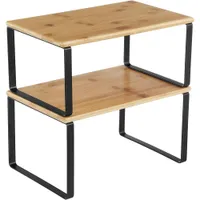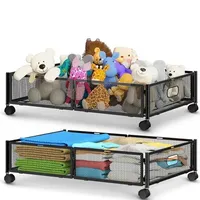How to store books in a small space – 8 tricks to maximize minimal space
Make your own library no matter the footprint with these eight small space storage ideas


When living in a small space, it is tempting to fall into the trap of keeping only the bare essentials to help make space. If you are a book lover, however, then you will know that the minimalist lifestyle is not an easy one to abide by.
But fear not. No matter if you are living in a tiny apartment or a cozy cottage, several book storage ideas can help you make the most of your space without having to sacrifice any of your prized collection, professional organizers assure.
In this guide, we explore the eight ways to store books in a small space which means you don't have to compromise between your home and your hobby.
How to store books in a small space
While it is hard for any bibliophile, it does help to declutter books when you are in a tight spot. Even getting rid of just two or three old reads that you either didn’t enjoy or know you will never gravitate towards can make a difference when organizing a small home. If you can, start here, using some decluttering tips for collectors and hoarders, before trying to find space for the rest of your collection.
With that hard step out of the way, it's time to start organizing bookshelves to make them fit in your floor plan.
1. Double up books on shelves

You might already be using vertical storage to save space in the form of bookshelves, but are you using every ounce of space they offer, asks Julianne Buonocore, president of The Literary Lifestyle.
‘I have a lot more books now, as I have been frequenting library sales. One thing I have been doing to create more space is doubling up on rows of books on my shelves. My shelves are deep enough that I can store rows of books both toward the back of the shelf and the front of the shelf. It's not ideal, but that's the bookworm's dilemma.’
Design expertise in your inbox – from inspiring decorating ideas and beautiful celebrity homes to practical gardening advice and shopping round-ups.
If you have shallow but tall shelves, you could also add in stands typically used to organize kitchen cabinets to stack books on top of one another without damaging the pages.
2-pack Cabinet Shelf Organizer | $17.99 at Walmart
2. Keep books under the bed
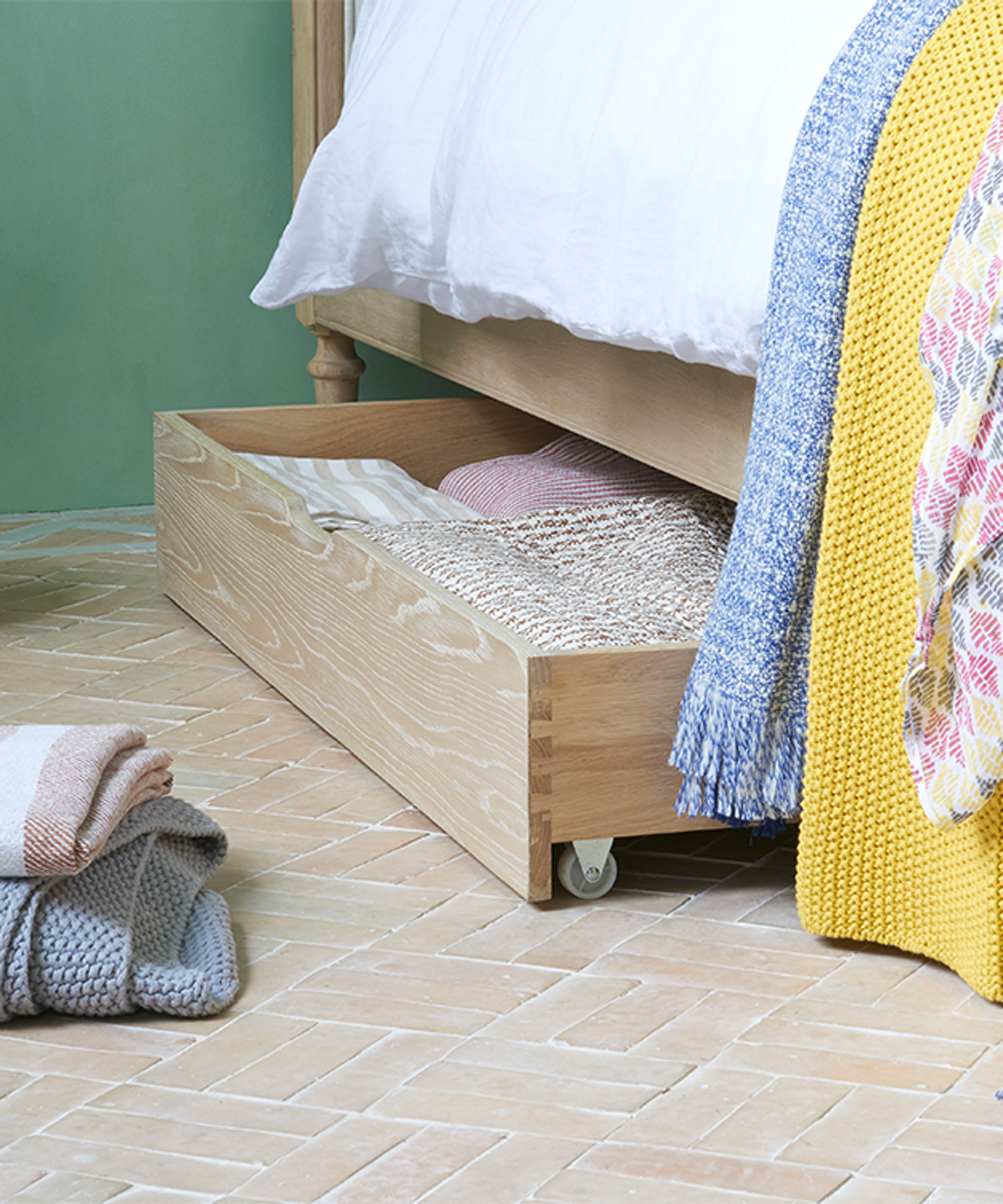
If your bookshelves are overflowing, but you can’t bear to part with prized tomes, you could consider moving books you have already read to under-bed storage ideas, suggests Tina Priestly, owner and CEO at Ready, Set, REFRESH.
‘I say use under-bed storage with slick bins or drawers to stash your books. No more clutter, just easy access to bedtime stories.’
When storing books like this, remember to periodically go through them and check that you still want to keep them all. You might find that in a few months, you don’t care about one book as much as you thought you did, giving you the perfect motivation to do some decluttering.
Metal Underbed Storage Box | $47.99 at Wayfair
A sturdy, metal crate on wheels will make it a lot easier t move books under the bed than a bag will. It also ensures your books stay protected, and don't get knocked or damaged.
3. Use multifunctional furniture
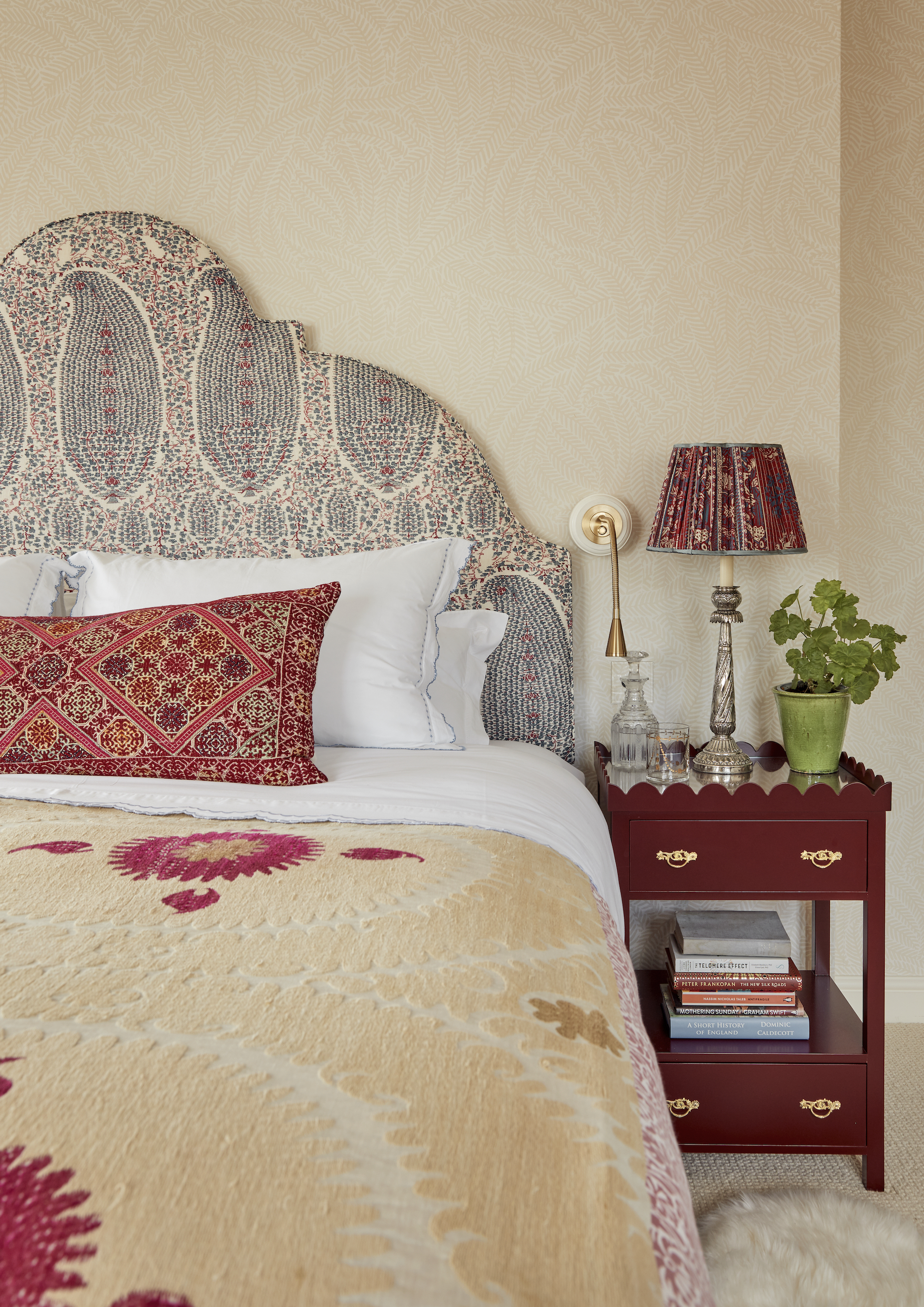
One of the best storage ideas for small spaces is multi-functional furniture. If you have too many books, there are a whole host of opportunities to keep them readily accessible, but out of the way.
Julianne Buonocore, book expert, for example, used to store extra books in a storage ottoman in her last-row home in Philadelphia. Tina Priestly, professional organizer, on the other hand, recommends picking coffee and side tables with extra storage inside to make small, personal libraries – ‘picture your side table as a sneaky book vault. I'm all about using stylish furniture that doubles as book storage. It's like having a secret library right where you want it.’
4. Build shelves close to the ceiling

When trying to organize a small house with no storage, it never hurts to take your shelving right up to the ceiling, even over the top of furniture if it helps to fit everything in and prevents clutter, says Julianne Buonocore, book expert.
‘On social media, I have seen people with small spaces build shelves very high, such as over a bed to the ceiling,’ she says. It is the perfect example of bookshelf wealth.
5. Display books on wall shelves
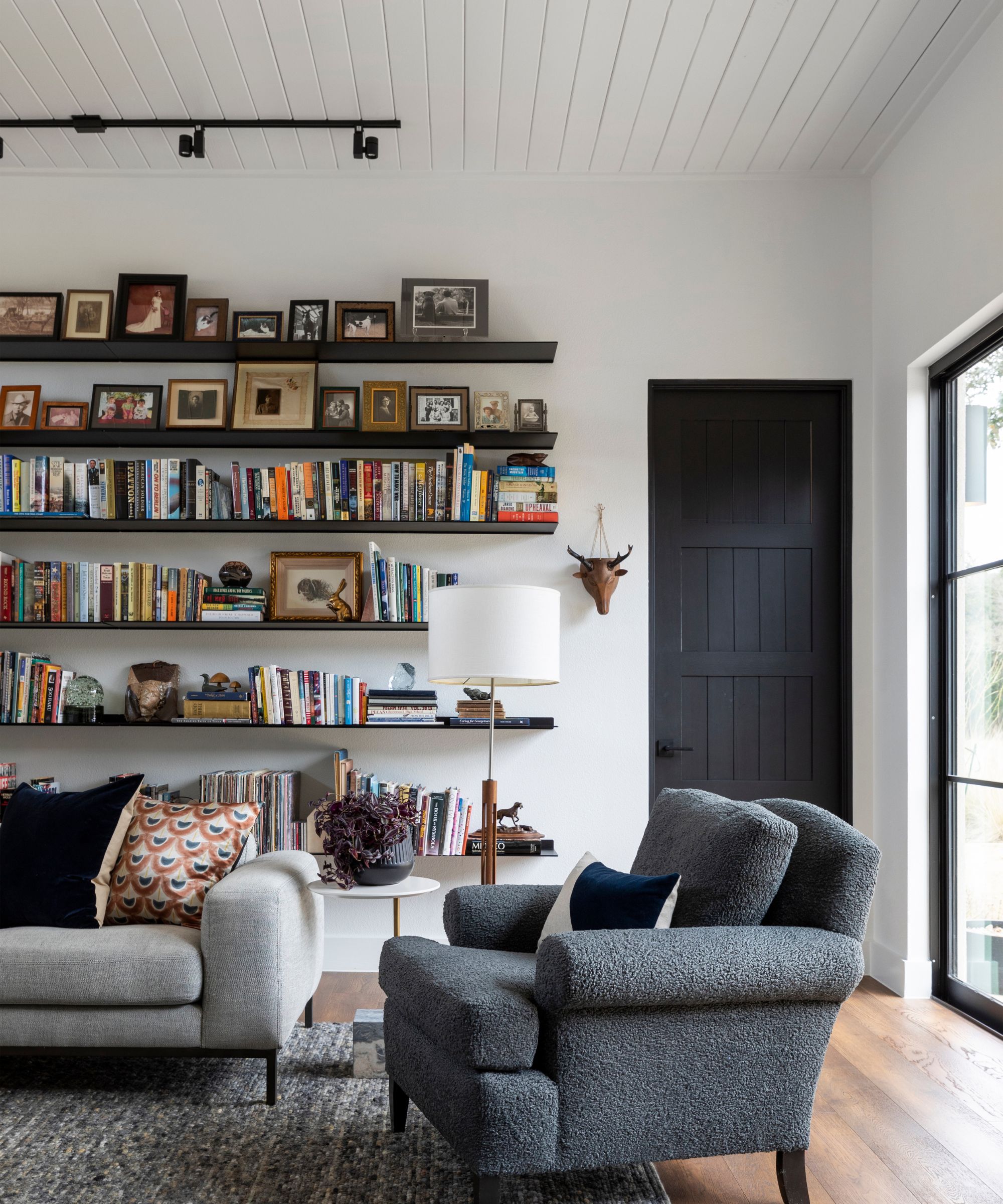
Books don't have to stay on bookshelves or inside storage units, you can place them center stage with floating shelving. ‘These come with the added benefit that they can be placed above desks, beds, sofas, etc. to utilize vertical wall space,’ says Lindsey Chastain, founder and CEO at The Writing Detective.
6. Line your hallways
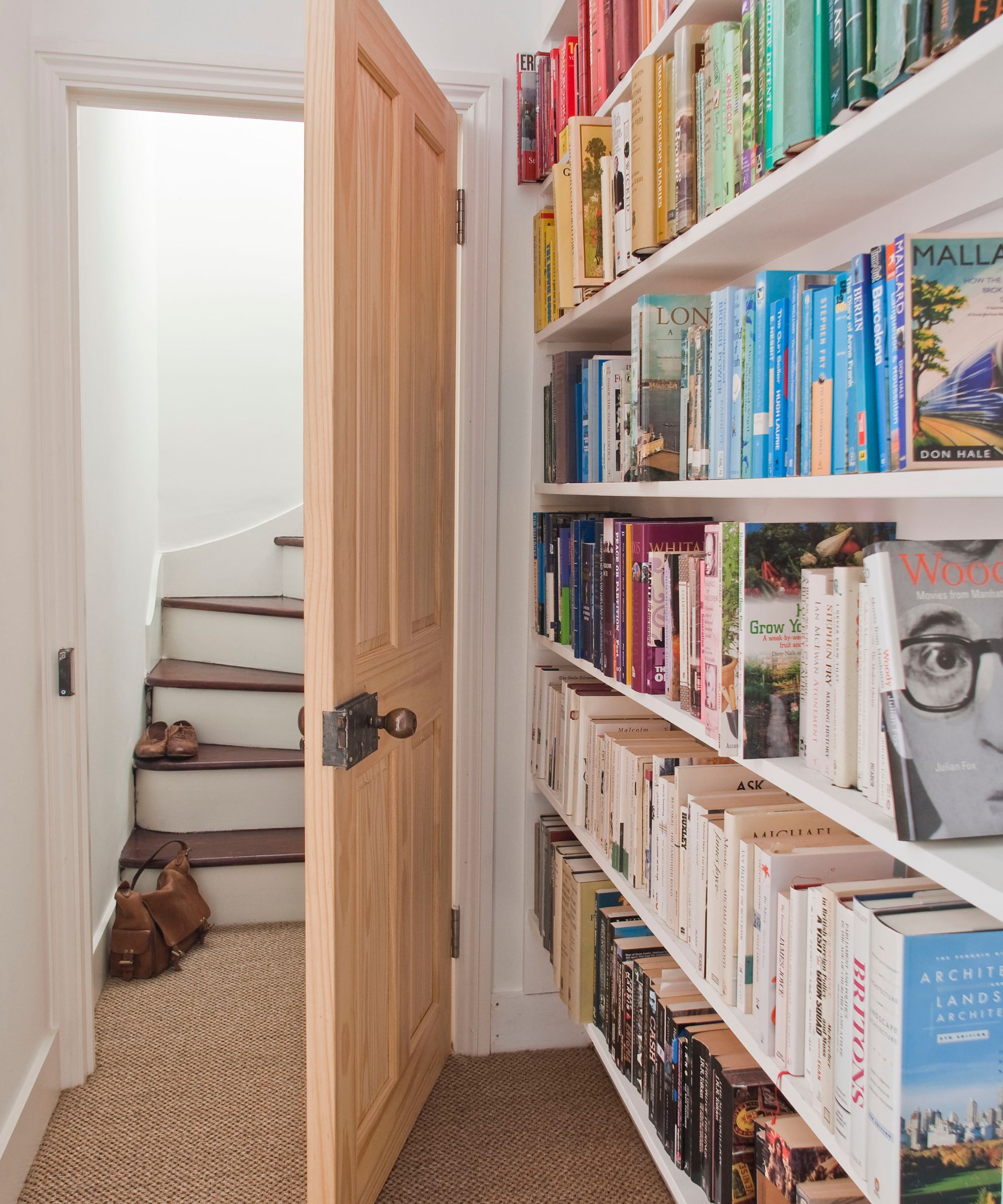
Another way to ace the bookshelf wealth trend is to level up your hallway storage ideas with rows of bookshelves.
‘Why waste hallway space when you can turn it into a dope literary escape?’ asks Tina Priestly, professional organizer. ‘Install slim bookshelves along the walls or use floating shelves to create a hallway library. It's like transforming a forgotten space into a reader's paradise.’
7. Build book nooks into walls

If you have the ability to knock back walling to create alcoves and niches, this can create ample storage space for books in small homes, points out book blogger Lindsey Chastain.
Installing shelves in an alcove is relatively easy to do yourself, making it a great DIY project to elevate your home, too.
8. Make books a decor piece

We have all seen the coffee table book trend floating around the internet, so why not use it to your advantage? Books smartly stacked on top of one another in purposeful ways will instantly make any book pile look like a decor piece, Audra George, CEO and owner at Pretty Neat: An Organizational Solution, assures us.
‘Use your favorite books as decor and decorate your spaces with them on the mantel, coffee table, or side tables.’
Where not to store books in small spaces
While it is certainly helpful to make use of any storage space you can find in a small home, some areas are strictly off limits for books – unless you want to risk them getting damaged, warns Barbara Richter, writer, publisher, and founder of DIYBook.
1. Your kitchen

When it makes sense to organize cookbooks in the kitchen, your everyday reads should be left out of this humid spot, Barbara urges:
‘First, assess how you're using your kitchen currently – are there cabinets that are underutilized or simply hiding junk? The depth of some kitchen shelving makes an ideal space for oversized art books and, naturally, cookbooks. Do not store books near cooking surfaces, near the microwave, or under the sink – all are bad for books and bad for your kitchen's existence. Some kitchen books may get grimy if they are on exposed shelving so they will require light cleaning.’
2. Your bathroom

As another warm, humid spot, books will quickly warp and discolor if kept in bathroom storage, Barbara continues:
‘Also, do not store precious volumes in bathroom closets that share space with a bath or shower – the humidity will warp the pages. As such, bathroom closets are good for cheap paperbacks or magazines – items, in other words, that you merely want to get out of the way or simply aren't ready to part with just yet. Do not store anything under the sink – that's asking for trouble,’ she adds.
‘A powder room, however, is another story; my parents' first-floor powder room closet was converted into sturdy bookshelves for oversized art books. Standard-issue accordion doors kept everything tucked away and made for easy retrieval, but your readers might like glass doors that could turn their books into unexpected showpieces in the unlikeliest of places.’
FAQs
Can I store books in plastic containers?
If you need to keep books tucked away in storage, plastic containers are a great option. They can protect the books from damage thanks to their sturdy edges, while also keeping them safe from humidity and dampness, keeping the pages in top condition. With a good seal, the containers will also help to protect your books against pests.
Should books be stored upright or flat?
When storing books for long periods, try to keep them stored upright, not leaning, using bookends if needed to prevent them from sagging or leaning on the covers, possibly resulting in damage to the corners.
If you have to lay books flat, make sure they are on a flat surface with nothing beneath them to prevent the covers from becoming dented and sort them with the heaviest books on the bottom and the lightest books on top.
When storing books in small spaces, ‘make sure you have some kind of organizational method so that you can retrieve your books when you need them,’ urges Barbara Richter, publisher. ‘It doesn't matter what your system is (genre, author, size, etc.) so long as it works for you.
‘I generally audit my shelves twice a year to take stock of what's where and whether some books belong elsewhere. That may not be necessary for most people, but I regularly consult my books for my work and so they tend to travel around the house.’

Chiana has been at Homes & Gardens for two years and is our resident 'queen' of non-toxic living. She spends most of her time producing content for the Solved section of the website, helping readers get the most out of their homes through clever decluttering, cleaning, and tidying tips. She was named one of Fixr's top home improvement journalists in 2024.
